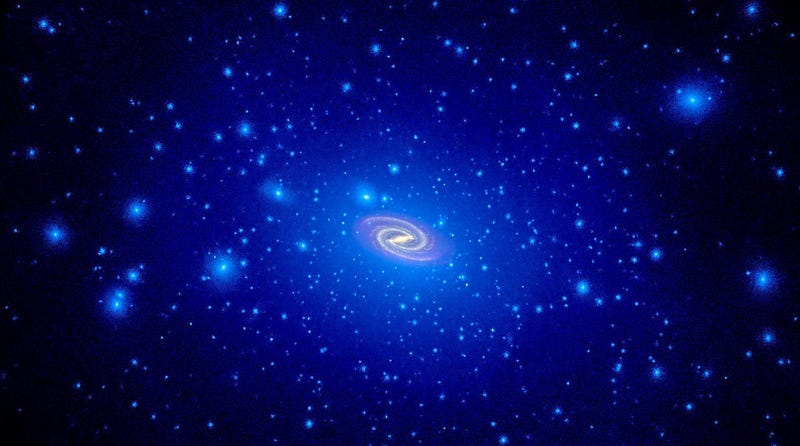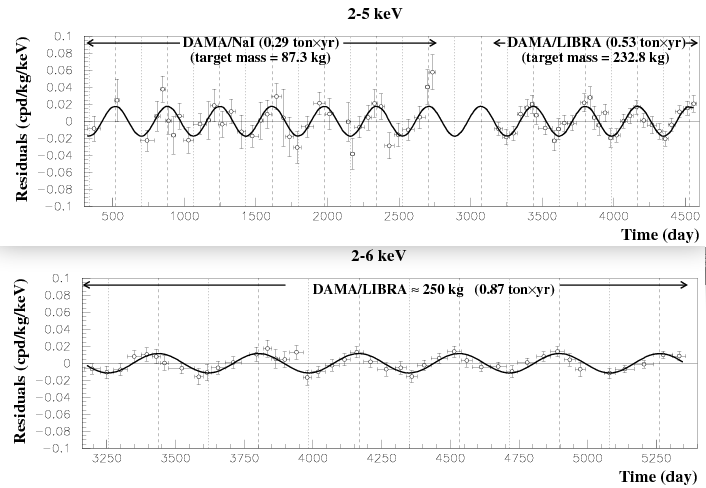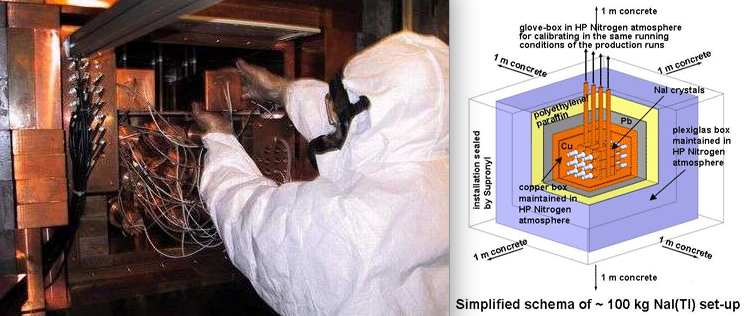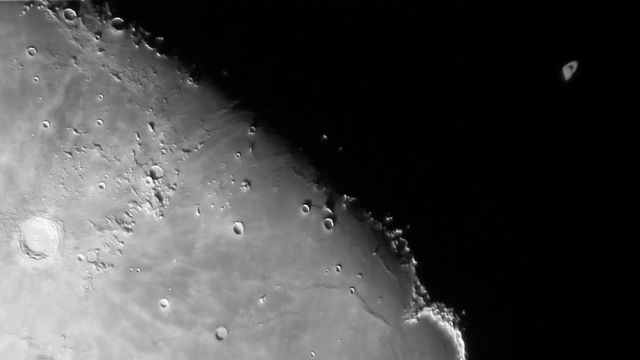How the experiment that claimed to detect dark matter fooled itself
The DAMA experiment has seen an annual modulation in its signal for over a decade. But can it be explained without invoking dark matter?
Today’s article comes courtesy of Sabine Hossenfelder. Sabine is an assistant professor for high energy physics at Nordita, Stockholm. She writes a blog called Backreaction and tweets as @skdh.
Physicists have plenty evidence for the existence of dark matter, matter much like the type we are made of but that does not emit any light. However, so far all this evidence comes from the gravitational pull of dark matter, which affects the motion of stars, the formation of structures, and acts as a gravitational lens to bend light, all of which has been observed. We still do not know however what the microscopic nature of dark matter is. What is the type of particle (particles?) that dark matter is composed of, and what are its interactions?

Few physicists today doubt that dark matter exists, and the vast majority presume it to be some type of particle which has simply evaded detection so far. First, there is all the evidence for its gravitational interaction. Add to this that we don’t know any good reason why all matter should couple to photons, and on this ground we can actually expect the existence of dark matter. Moreover, we have various candidate theories for physics beyond the standard model that contain particles which fulfil the necessary properties for dark matter. Finally, alternative explanations, by modifying gravity rather than adding a new type of matter, are disfavored by the existing data.
Not so surprisingly thus, dark matter has come to dominate the search for physics beyond the standard model. We seem to be so very close!
Infuriatingly though, despite many experimental efforts, we still have no direct evidence for the interaction of dark matter particles; neither self-interactions among dark matter particles themselves nor with the normal matter that we are made of. Many experiments are searching for evidence of these interactions. It is the very nature of dark matter — it interacting so weakly with our normal matter and with itself — which makes finding evidence so difficult.
One observation being looked for is decay products of dark matter interactions in astrophysical processes. There are presently several observations, such as the Fermi γ-ray excess or the positron excess, whose astrophysical origin is not presently understood and so could be due to dark matter. But astrophysics combines a lot of processes at many energy and density scales, and it is hard to exclude that some signal was not caused by particles of the standard model alone.
Another type of evidence that is being sought after comes from experiments designed to be sensitive to the very rare interaction of dark matter with our normal matter when it passes through the planet.

These experiments have the advantage that they happen in a known and controlled environment (as opposed to somewhere in the center of our galaxy). They’re typically located deep underground in old mines to filter out unwanted types of particles (e.g., from the Sun, the planet’s surface, radioactive sources, etc.), collectively referred to as “background”. Whether or not an experiment can detect dark matter interactions within a certain amount of time depends on the density and coupling strength of dark matter, the magnitude of the background, and so also on the type of detector material.
So far, none of the dark matter searches has resulted in a statistically significant positive signal.

They have set constraints on the coupling and density of dark matter. Valuable, yes, but frustrating nevertheless.
One experiment that has instilled both hope as well as controversy among physicists is the DAMA experiment. The DAMA experiment sees an unexplained annual modulation in the event rate at high statistical significance. If the signal was caused by dark matter, we would expect there to be an annual modulation due to our celestial motion around the Sun. The event rate depends on the orientation of the detector relative to our motion and should peak around June 2nd, consistent with the DAMA data.

There are of course other signals that have an annual modulation that cause reactions with the material in and around the detector. Notably there is the flux of muons which are produced when cosmic rays hit the upper atmosphere. The muon flux however depends on the temperature in the atmosphere and peaks approximately 30 days too late to explain the observations. The DAMA collaboration has taken into account all other kinds of backgrounds that they could think of, or that other physicists could think of, but dark matter remained the best way to explain the data.
The DAMA experiment has received much attention not primarily because of the presence of the signal, but because of the physicists’ failure to explain the signal with anything other than dark matter. It adds to the controversy that the DAMA signal, if due to dark matter, seems to lie in a parameter range already excluded by other dark matter searches. Then again, this may be due to differences in the detectors.

The issue has been discussed back and forth for about a decade now.
All this may change now that Jonathan Davis from the University of Durham, UK, in a recent paper demonstrated that the DAMA signal can be fitted by combining the atmospheric muon flux with the flux from solar neutrinos: Fitting the annual modulation in DAMA with neutrons from muons and neutrinos.
The neutrinos interact with the rock surrounding the underground detector, thereby creating secondary particles which contribute to the background. The strength of the neutrino signal depends on the Earth’s distance to the sun and peaks around January 2nd, at perihelion. In his paper, Davis demonstrates that for certain values of the fluxes of muons and neutrinos, these two modulations combine to fit the DAMA data very well. The fit, in fact, is equally as good as a dark matter explanation. And the robustness of his model’s quality remains as good as the dark matter explanation even after he has corrected the goodness-of-the-fit by taking into account the larger number of parameters.
Moreover, Davis discusses how the two possible explanations could be distinguished from each other with a further experiment. For example, you can analyze the DAMA/LIBRA data for residual changes in solar activity that should not be present if the signal were entirely due to dark matter.
Tim Tait, Professor for theoretical particle physics at the University of California, Irvine, commented that “[This] may be the first self-consistent explanation for DAMA.” One important caveat or cause for caution is that Davis’ argument is partly based on estimates for the reaction rate of neutrinos with the rock that has yet to be confirmed with more qualitative studies. But Thomas Dent, a former particle cosmologist now working in gravitational wave data analysis, welcomed Davis’ explanation: “DAMA has been a distraction to theorists for too long.”
If Davis’ model is confirmed, we will have finally cleared up one of the most puzzling results in experimental physics from the past decade, and strengthened what we know about what dark matter can (and cannot) be!
Enjoyed this? Thank @skdh and leave your comments at the SWaB forum here!





